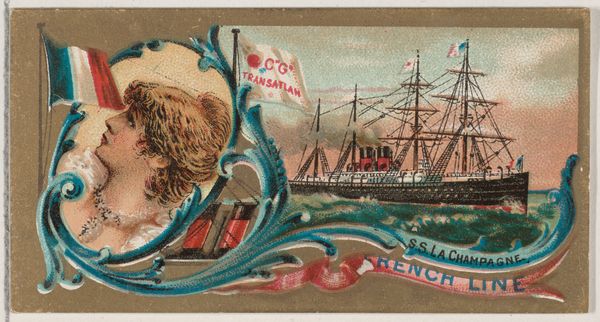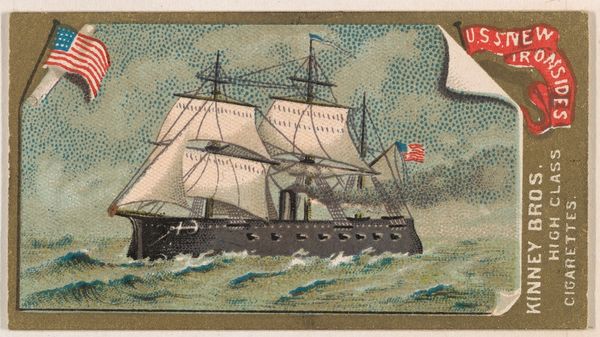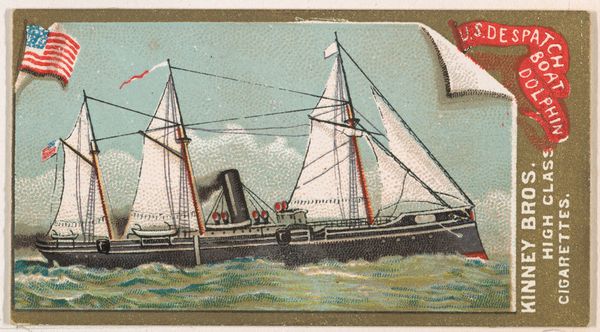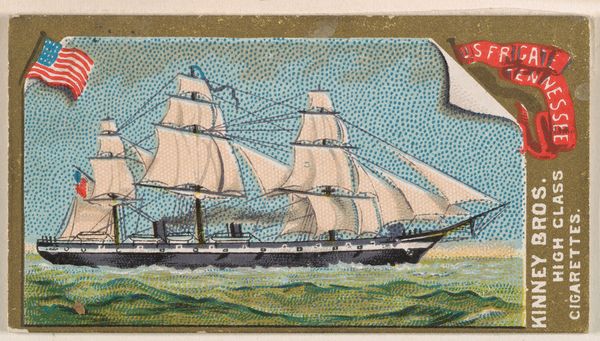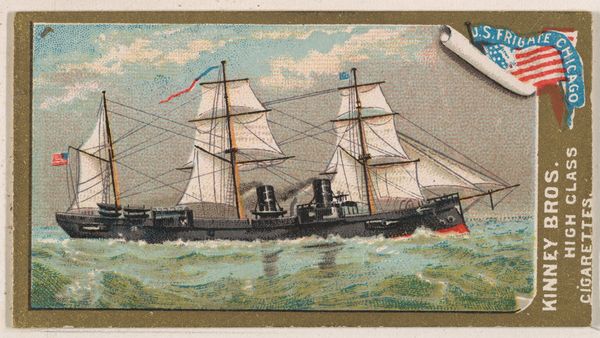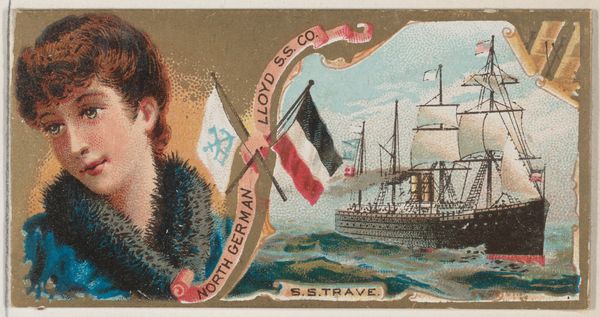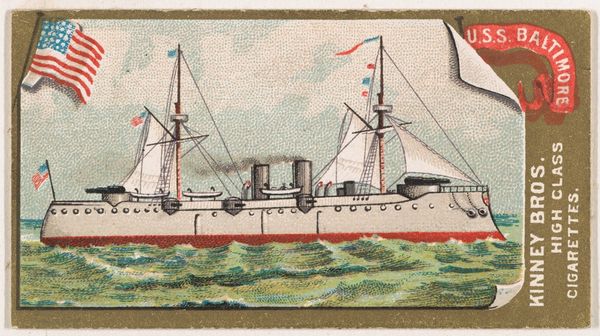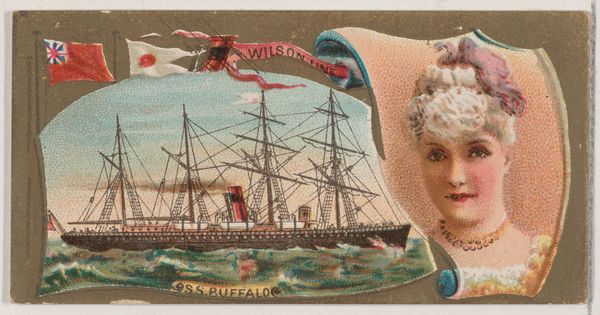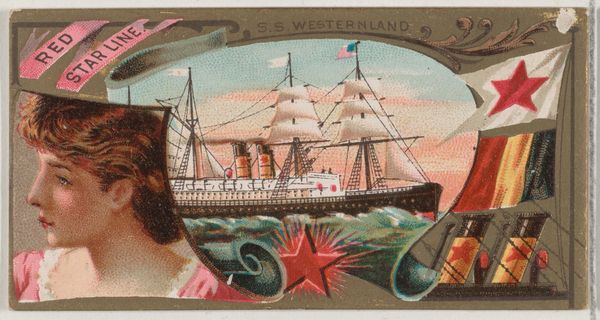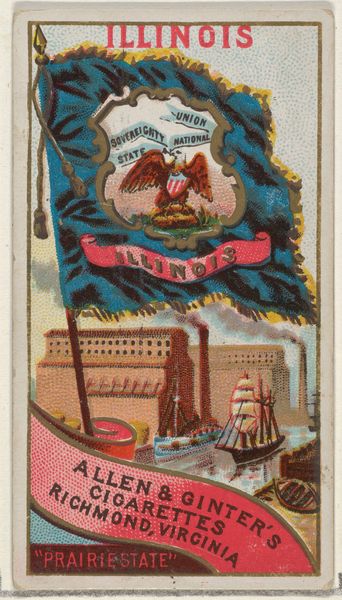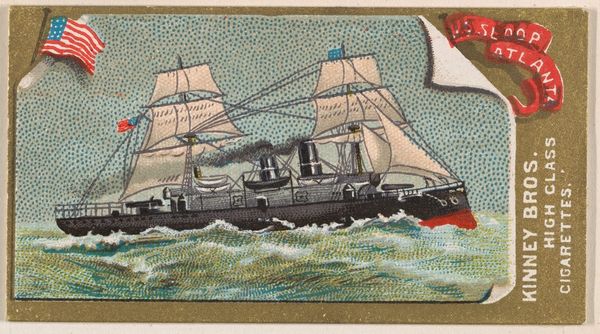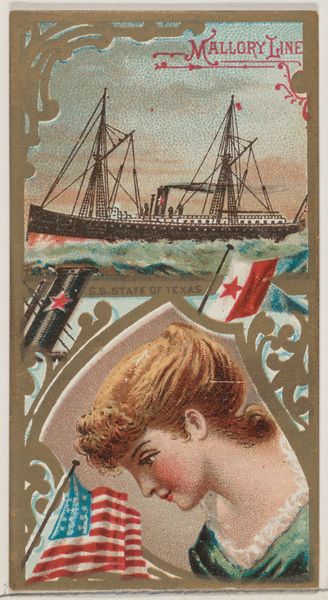
Steamship Atlas, Atlas Steamship Company, from the Ocean and River Steamers series (N83) for Duke brand cigarettes 1887
0:00
0:00
drawing, print, watercolor
#
portrait
#
drawing
#
water colours
# print
#
figuration
#
watercolor
#
coloured pencil
#
naive art
#
mixed media
#
watercolor
Dimensions: Sheet: 1 1/2 × 2 3/4 in. (3.8 × 7 cm)
Copyright: Public Domain
Editor: Here we have *Steamship Atlas, Atlas Steamship Company*, a print made in 1887 as part of the *Ocean and River Steamers series* for Duke brand cigarettes. I'm immediately struck by its duality – we see a portrait of a woman on the left and a detailed rendering of a steamship on the right, both framed in decorative flourishes. What should we make of this unexpected combination? Curator: It's a fascinating piece of commercial ephemera. Consider the social context: late 19th century America, burgeoning industrialization, and a booming tobacco industry. These cigarette cards served as advertisements but also as collectibles. The combination of the idealized woman and the modern steamship reflects the era's aspirations: beauty, progress, and global reach. Editor: So, the woman symbolizes beauty and perhaps the allure of a lifestyle enabled by these industries, while the ship represents… trade? Global dominance? Curator: Precisely. The Atlas Steamship Company connected America to the Caribbean and Latin America, facilitating the flow of goods and capital. This image then, becomes a small but potent symbol of American power and commercial ambition. What about the artistic choices? Do you notice anything in particular about the style? Editor: I do; it feels almost… naive? The rendering of the ship, while detailed, lacks a certain polish. The woman's portrait is also very stylized. Was that intentional? Curator: It’s typical of printed advertising from the period. The cards needed to be eye-catching and easily reproducible on a mass scale. What we might call "naive" today was simply the visual language of popular culture at the time. But, considering the reach that the Atlas company intended for itself through trade, this 'everyman' style ensured widespread resonance with ordinary people and thus its target audience. Editor: That’s a really helpful perspective. It’s easy to dismiss these objects as simple advertisements, but they are little time capsules. Curator: Absolutely. By examining its historical context, we see this image reveals so much about the social and cultural values of its time. The politics of imagery are powerful, especially when seemingly innocuous.
Comments
No comments
Be the first to comment and join the conversation on the ultimate creative platform.
